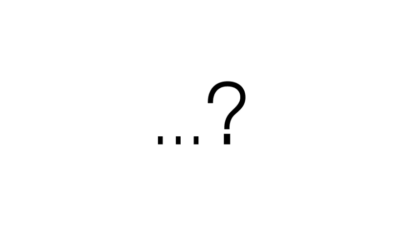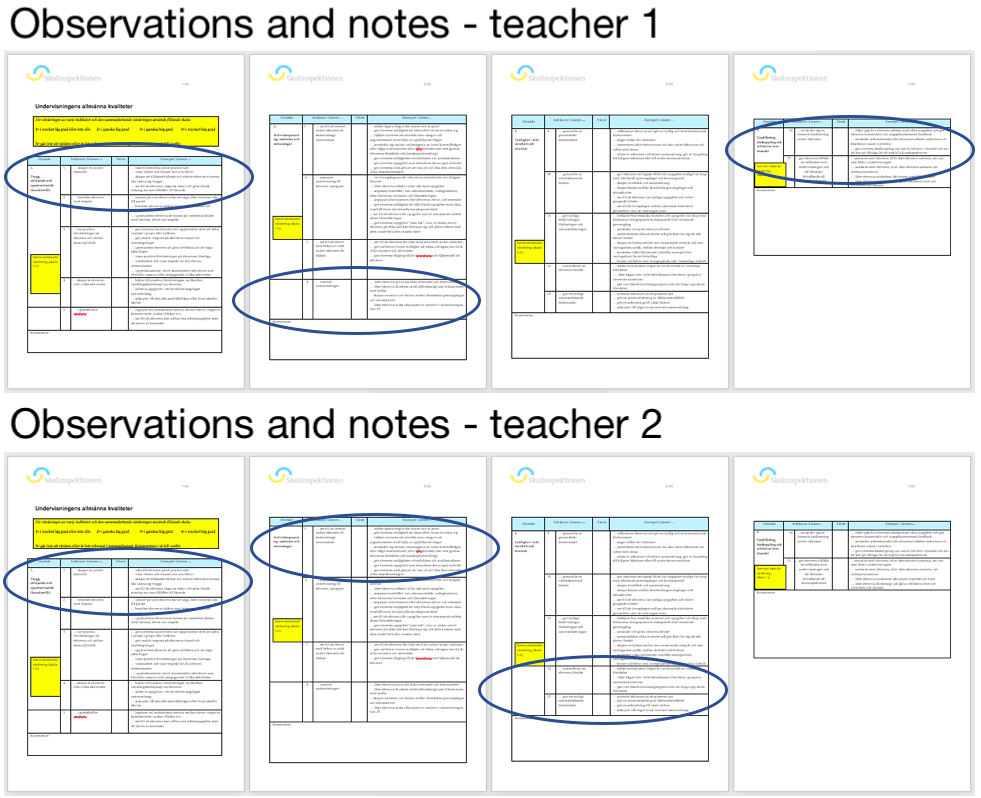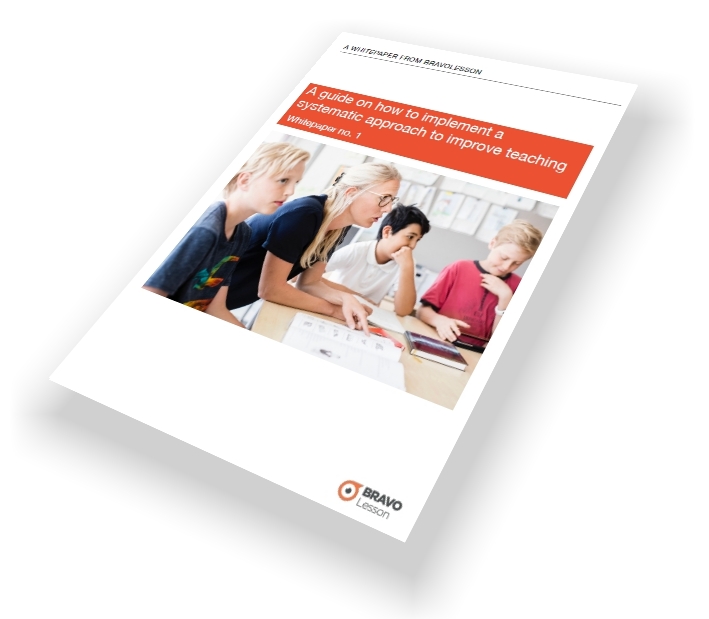After part 1 of 8 in our series of 30 minutes lunch webinarsTheme: Equivalent leadership in all classrooms Watch the video below. As a participant at our webinars, you can listen and also ask...
Part 6 of 10. The process from lesson observations through to the appraisal meetings with the teachers
Meet principal Sven-Erik Berg who has created a
systematic process from lesson observations
to the appraisal meetings
This is about how Sven-Erik Berg at Stenbackeskolan in Uddevalla, step by step since 2014, has created his structure to have both insight and overview of the entire learning process that he is responsible for leading. This is about how he has become more and more focused on, and how he can now personally follow, what really takes place in the students’ learning processes.
In 2014, Sven-Erik began to focus more on the entire teaching process. In 2015, he started to use the Swedish School Inspection’s form for lesson observations to analyse what is happening in the classroom, both from the pupils’ and teachers’ perspective. In 2018 he decided on using BRAVOLesson.
The process from classroom visits to appraisal meetings
– I have chosen to put the form and documentation for the appraisal meetings into BRAVOLesson to ensure that I can make and analyse feedback from these meetings over time. It is also a very good compilation of the professional conversations along with the lesson observation and there is a portfolio for each teacher inside the system. In the conversation, we link it together with the teacher’s own view and outcome. We reflect together and decide on new individual focus areas for what to improve using the objectives module in BRAVOLesson.

“. . . it spread in the staff room when several explained that it felt like you were allowed to participate with your own reflections for real.”
Why did you choose BRAVOLesson?
– When we learned about BRAVOLesson, it seemed obvious to try to create a core school improvement structure. It gives me, as a legally responsible principal, a tool where I can gather all documentation, objectives, planning and fulfillment for each individual teacher, says Sven-Erik.
– I myself choose the focus area for each period or term which is then the base for what observation points that we use. In BRAVOLesson I can also add video clips that we then use in the follow-up conversation with the individual teacher, for a team or for all staff..
How was it to get started with BRAVOLesson?
– After some communication back and forth before the decision, all that was needed were email addresses for all staff and to choose observation forms from BRAVOLesson’s online library. The platform is easy to understand and easy to use. There is a help function inside BRAVOLesson which I sometimes use to understand how to use the different features.
– During spring I used an observation form that is based mostly on the Swedish School Inspection’s observation form. All teachers have had at least one visit.
How have the teachers reacted to the system and your focus?
– At first, some teachers were a bit uncertain, but it spread in the staff room when several explained that it felt like you were allowed to participate with your own reflections for real. All teachers have also been video-filmed to watch each other’s films together as part of collaborative learning.
What has BRAVOLesson led to so far – what effect has it had?
– I myself have experienced my work more professionally. The structure that BRAVOLesson offers helps me to document, plan and follow up on all employees and their learning and development process. I have done lesson visits when I looked at the teachers’ lesson plan in advance and used an observation form that was mostly designed based on the School Inspectorate form. All teachers have had at least one visit. This has given us a more comprehensive pedagogical dialogue that has led to joint decisions on changes in our processes and classrooms.
“This summer I can go on vacation and feel that my pedagogical leadership is in place. It will be clear and easy to start the next school year in August. ”
Principal Sven-Erik at Stenbackeskolan has a single-user licens
He has been inspired by the BRAVOLesson library with observation templates.
Related Stories
An appetizer (video) – the benefit you get from our 8 lunch webinars
144.000 lessons in focus on Åmåls municipality’s schools
PRESS RELEASE - OCTOBER 1, 2021 Now a 2-year project focusing on the quality of teaching starts at all schools in Åmål. Kent Jönsson, who is Head of school in Åmål, has together with the principals...
The most important question every day of the academic year
Now a new academic year has started and at the same time 1000s of lessons at each school. Before that school is out in June next year, a total of more than 100 million lessons will have been...







